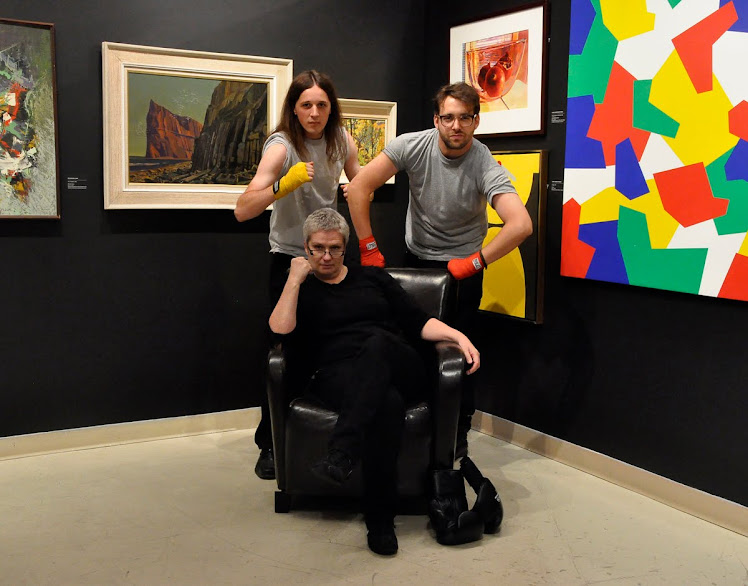
Ronald Kostyniuk
Relief Structure, 1974
Paint on mixed substrate
50 ½ x 50 ½ x 8 in.
Gift of the Artist, 2006
Sculpture 1! It was great to see that location come my way from the karmic coffee tin. I have always seen these, a handful of three-dimensional works, waiting on the top shelf of the sculpture storage for their first exhibition. They were wrapped in plastic with bright, colorful, industrial looking forms growing out a solid square base. Even interesting in its bag on the shelf, it is great to now see one hanging on the wall.
The shapes remind me of crystalline growth in a cave: roughly rectangular volumes protruding at different angles from a stable base. The difference is that these shapes are colorful, immaculately painted, and animated through their placement on the base and their relationships to other colours around them. The impression of organic growth is suitable given the artists interest in the natural world. As Kostyniuk explains, “Color-form, as an extension into the real space of the viewer becomes a tangible entity – one which parallels, albeit crudely, the complexity and harmony of the colors and iridescences of nature’s infinitely beautiful world.” [
This idea about the Color-form came up in an interesting way as we discussed each of our selections for the day. There is definitely a connection between the work of Kostyniuk and the more abstract canvasses that Lawren Harris was painting within the Group of Seven. The forms that Kostyniuk produced are directly influenced by natural forms, and informed by the colours and iridescences of that natural world. Harris was painting to relay a sense of place from these Canadian landscapes. The abstract forms that began to inhabit Harris’ later canvasses function in much the same way of Kostyniuks’ protruding shapes. The fact that Kostyniuk also holds a Masters degree in biology helps explain this deep connection with the natural world.
While at the
This is a very strong work to include at this point of the exhibition, largely dominated by small to medium sized paper-based works thus far. I decided to try the work in the middle of the longest wall in the gallery space. On top of that, I made the decision to hang the work 6" higher than the 'standard' hanging height. There were a few reasons for this. One reason is that after day two, there were clearly two dominant themes emerging. The investigation into nationality was starting to take shape with a nice relationship developing amongst those works. These were starting to outweigh the abstract, color-dominated works, which I would like to see play-out further. By hanging this choice higher on the wall, it was a clear focal point. This work will hopefully rejuvenate the abstract portions of the exhibition while maintaining a tie to the organic, nationalistic works too.
Ronald Kostyniuk was born in
Darryn

No comments:
Post a Comment